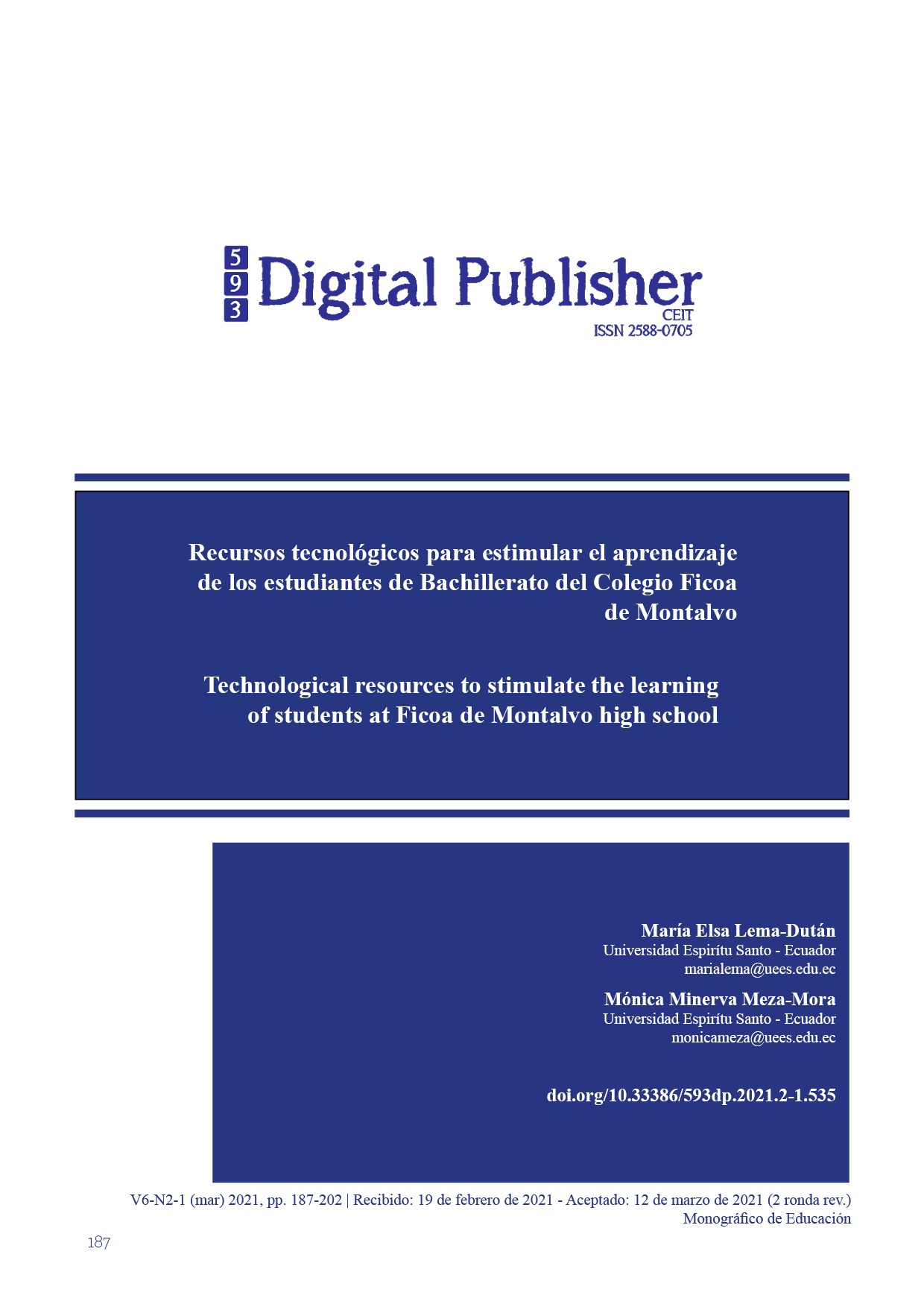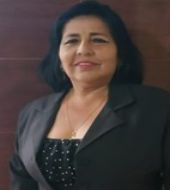Technological resources to stimulate the learning of students at Ficoa de Montalvo high school
Main Article Content
Abstract
The objective of this research is to design an educational model containing strategies that constitute an effective guide in the application of technological resources that should be used to stimulate the learning of high school students from the “Ficoa de Montalvo” fiscal college. Different methodologies of the theoretical level and empirical level stand out. The logical historical method allows a review of the historical antecedents that are related to the study of the real trajectory and technological advances, the deductive method allows us to deduce logical conclusions from a series of premises or principles and the holistic method helps to decompose the object in the field is the integral way of observing an event or phenomenon. On the other hand, this research shows the training of teachers, the construction that classrooms must have and the level of administration of tools that the educator must acquire. The use of Information and Communication Technologies (ICT) in educational practice is a way to encourage students in the classroom, so what is necessary will be identified for teachers to adapt to this new technological society and keep an affective attitude to function in the educational context. This topic also presents theoretical conceptualizations, practical implementations of learning in daily life and effects by the latest health events worldwide, which directly involve the way of educating oneself, considering technology as a didactic resource. This study will address new forms and processes of teaching, using the relevant resources. It should be noted that technological resources are of great importance at the school stage and are intended to facilitate the acquisition, storage and use of knowledge, to achieve desired results in the classroom and obtain meaningful knowledge in students.
Downloads
Article Details

This work is licensed under a Creative Commons Attribution-NonCommercial-ShareAlike 4.0 International License.
1. Derechos de autor
Las obras que se publican en 593 Digital Publisher CEIT están sujetas a los siguientes términos:
1.1. 593 Digital Publisher CEIT, conserva los derechos patrimoniales (copyright) de las obras publicadas, favorece y permite la reutilización de las mismas bajo la licencia Licencia Creative Commons 4.0 de Reconocimiento-NoComercial-CompartirIgual 4.0, por lo cual se pueden copiar, usar, difundir, transmitir y exponer públicamente, siempre que:
1.1.a. Se cite la autoría y fuente original de su publicación (revista, editorial, URL).
1.1.b. No se usen para fines comerciales u onerosos.
1.1.c. Se mencione la existencia y especificaciones de esta licencia de uso.
References
Alfonso, R. D. (15 de 07 de 2020). Nuevas Tecnologías y Educación en el siglo XXI.
Annan, K. (2000). We, The Peoples. The roleof the United Nations in the 21st Century. Naciones Unidad: Nueva York: Naciones Unidas.
Barroso Osuna, J. M. (2017). Producción de recursos de aprendizaje apoyados en Realidad
Aumentada por parte de estudiantes de magisterio.
Cabero, J. (1999). Tecnología Educativa. Madrid.
CASTRO, J. J. (2018). Integración de recursos didácticos 2.0 en un Entorno.
España, I. R. (07 de 12 de 2018). Los recursos tecnológicos, elemento clave para ayudar a los maestros que buscan la innovación educativa en sus colegios.
Guadarrama, C. M. (2008). La implementación de recursos tecnológicos en la práctica educativa.
González, H. T. (20 de 12 de 2018). Recursos tecnológicos para la integración.
Hernández-Sampieri, R. (2014). Definiciones de los enfoques.
Hernandez, R. M. (2017,). Impacto de las TIC en la educación: Retos y Perspectivas.
Kennedy, S. (2018). Educational Tecnhnology and curriculum. United Kingdom: Ed Tech press.
María Cacheiro, C. S. (2016). Recursos tecnológicos en contextos educativos.
Michael, y. v. (2019). recursos tecnológicos en el rendimiento académico. aula.
Monahan, T. (2013). Globalization, Technological Change, and Public Education. New York:
Manosalvas Castro, J. J. (2018). Integración de recursos didácticos 2.0 en un entorno virtual para el fortalecimiento del aprendizaje autónomo de los estudiantes de bachillerato.
Prado Aragonés, J. (2001). La competencia comunicativa en el entorno tecnológico: desafío para la enseñanza.
Puga, M. d. (2015). Medios, Materiales y Recursos tecnologicos.
Ramírez Montoya, M. S. (2009,). Recursos tecnológicos para el aprendizaje móvil. iberoamericana de educación a.
Ramos Galarza, c. (enero de 2020). relación de los recursos tecnológicos y el aprendizaje significativo de estudiantes de bachillerato de ciencias sociales.
Rodríguez Jaime, m. a. (2017). recursos tecnológicos educativos, en la recuperación Pedagógica, de la asignatura de lengua y literatura.
Serrano, C. M. (2014). Importancia de los.
Tripathi, H. (2019). Educational Technology and ICT in Education. Canadá: Red Shine
Yaguana, J. (2019). Recursos tecnológicos en el rendimiento académico.
ZAPATA, I. M. (2017). Implementación de recursos tecnológicos.



